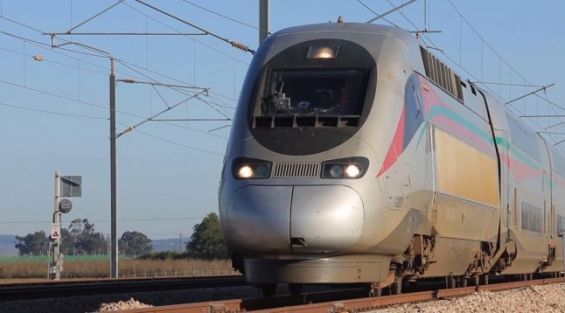King Mohammed VI and French President Emmanuel Macron have inaugurated earlier this afternoon Morocco’s first high-speed rail line, constructed to host the high-speed train (LGV). Linking Tangier to Casablanca, the train dubbed Al Boraq is currently driving the sovereign and President Macron to the capital for its first official trip ever.
France was a primordial partner in the building of the high-speed rail line. The European country contributed to the financing of LGV, granting Morocco loans that covered more than 50% of the project’s expenses.
However, postponing the launch of the rail line resulted in creating additional expenses. According to Map news agency, finalizing the project has mobilized investments of around 22.9 billion dirhams.
The delays
Indeed, around 50 associations and activists created a collective they named «Stop TGV», denouncing the «huge amount of money» spent on the project. They have also criticized the fact that the works linked to the Moroccan LGV took 7 years.
These works were not only taking too long but they were also hindering the activities of other train stations and rail ways operating in the Kingdom. In the recent months preceding the high-speed rail line’s inauguration, delays affected the entire rail network.
The repeatedly announced delays angered, several times, ONCF’s clients who were strongly annoyed by the management of train stations linking Casablanca to Tangier. Some of them have even protested in train stations against the situation.
The deadly accident
ONCF’s delays were later followed by a deadly accident that took the lives of 7 people. Near Bouknadel, a commune located between Salé and Kenitra, an ONCF train run off trails injuring 125 people. The accident took place on the same rails used at the time by the LGV.
Following the accident, an in-depth investigation was opened to determine the circumstances surrounding the train crash but according to a source within ONCF contacted by Yabiladi, the tragedy might have been caused by the lack of maintenance of rolling stock.
Days later, the findings of the investigation conducted to determine the reasons behind the deadly train was revealed, suggesting that the train’s driver, who was also injured in the crash, will be prosecuted for manslaughter.
In a communiqué, the prosecutor indicated that the ONCF train linking Casablanca to Kenitra, «was traveling at 158 km/h speed while the maximum speed at which a train travels in the area where the accident took place is set at 60 km/h».
Focusing on the high-speed train made the country neglect other railway projects in several regions, including Kenitra, Ouazzane, Khmissat, Bouarfa, Midelt, Guercif, Ain Dfali and Ain Aicha.
The project has even made the creation of other rail lines seem very far. Here we mention the example of Morocco’s ambition to link Marrakech to Agadir, a route that has never been home to trains.





 chargement...
chargement...













